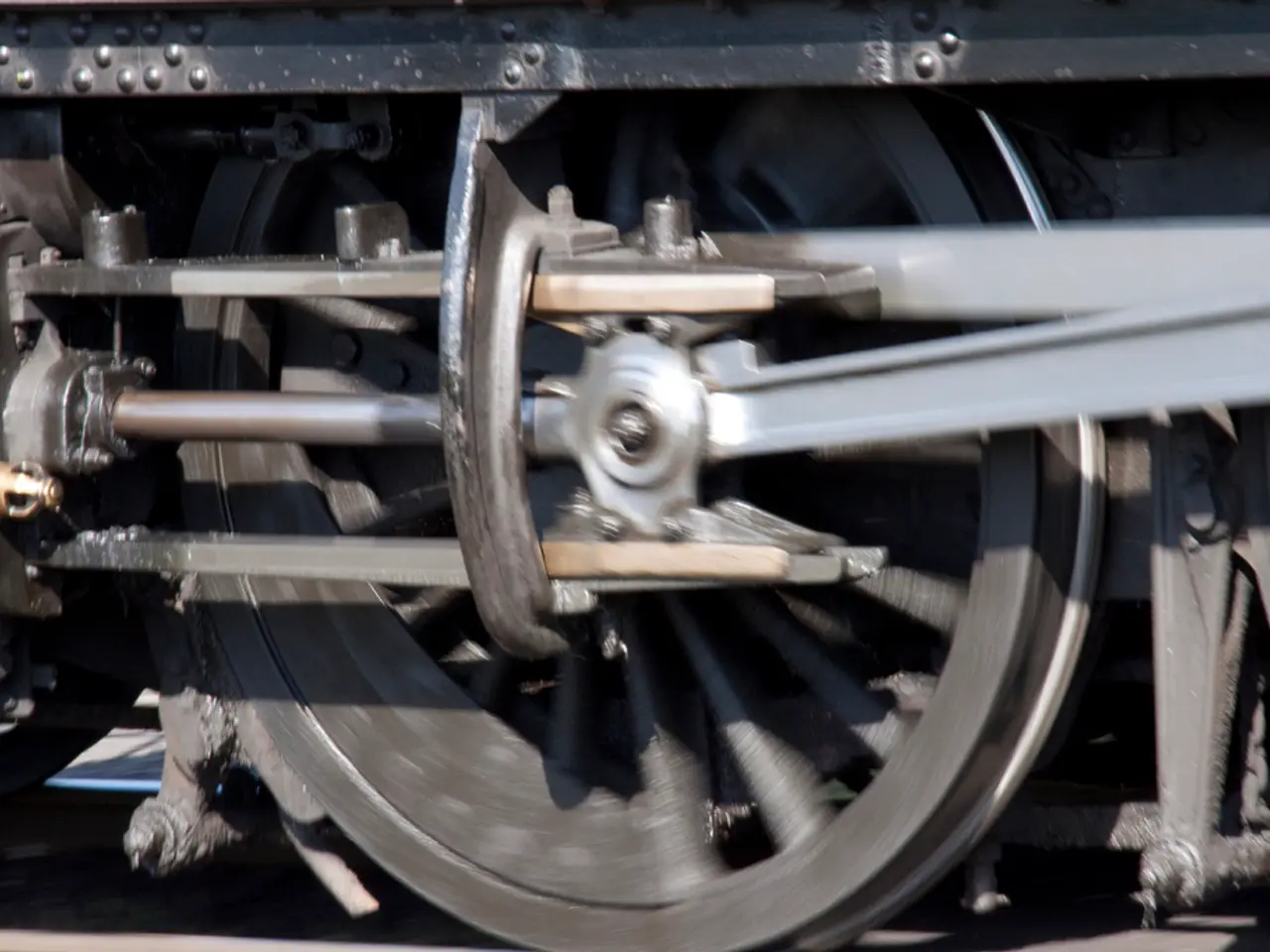DB Cargo advocates for a novel approach in crisis zones, focusing on streamlined transportation using individual vehicles.
DB Cargo, the freight division of Deutsche Bahn, is facing financial struggles and is considering significant cuts to its single-wagon traffic operations. This move has raised concerns among unions and industry experts, who fear the potential consequences for the transportation sector.
According to reports, DB Cargo's plans are being criticised as "lazy cuts" by the union EVG, with the railway union fearing a "clear-cut" in single-wagon traffic. The union's concerns stem from the potential increase in reliance on alternative transport modes like trucking, potential cost increases, and disruption to mixed freight shipments.
In single-wagon traffic, individual freight wagons are collected directly from corporate customers and assembled into long trains at marshalling yards. This method allows multiple clients' goods to be consolidated in smaller shipments on rail, simplifying logistics for businesses not shipping in full trainloads.
The plans come as DB Cargo is under pressure from the EU Commission to become profitable by the end of 2026. The commission aims to prevent excessive state subsidies and encourages companies to find sustainable and economically viable solutions.
If DB Cargo significantly reduces single-wagon traffic, the potential consequences for industry include increased reliance on alternative transport modes such as trucking. For instance, in Switzerland, the restructuring of freight services including single wagonload reforms could add 70 trucks per day on roads, roughly 20,000 trucks annually, if rail capacity is not replaced by other solutions.
Logistical challenges for mixed freight could also arise, potentially increasing costs and transit times or forcing supply chains to reorganize. Moreover, more trucks on roads would increase emissions and road congestion compared to rail transport.
However, there are alternatives or mitigations for industry. Intermodal and combined transport, using combined rail-truck transport where cargo is moved by rail in block or shuttle trains, with trucks for first/last mile delivery, could help reduce road traffic and emissions while maintaining supply chain efficiency.
EU support for rail freight includes funding to modernize wagons and terminals to increase capacity and efficiency. Such investments aim to make rail more competitive vs. road and could help accommodate restructured single-wagon flows or alternatives like block trains.
Development of shuttle/block trains, where freight is consolidated into block or shuttle trains serving major hubs or corridors, offers a more efficient and potentially cost-effective service for customers.
Customer collaboration for cost-optimized models is another strategy. Rail operators are working with customers on new, optimized production models for single wagonload service, potentially redesigning operations to maintain service levels with fewer resources.
In conclusion, industry faces risks of higher costs, logistical disruption, and environmental impacts if single-wagon traffic is reduced without viable rail alternatives. Adopting intermodal transport, investing in fleet modernization, and developing block train services appear as key strategies to mitigate these consequences and sustain competitive, environmentally friendly freight solutions.
[1] [Source] [2] [Source] [3] [Source]
- The community policy could include measures to incentivize DB Cargo to maintain or develop alternative vocational training programs for their employees, resulting in fewer job losses during restructuring and a more skilled workforce in the transportation industry.
- To address potential finance issues, partnerships between rail operators and the automotive industry could be established, with the latter providing funding for the modernization of wagons and terminals, ensuring increased capacity and efficiency for vocational training and competitive rail freight solutions.




